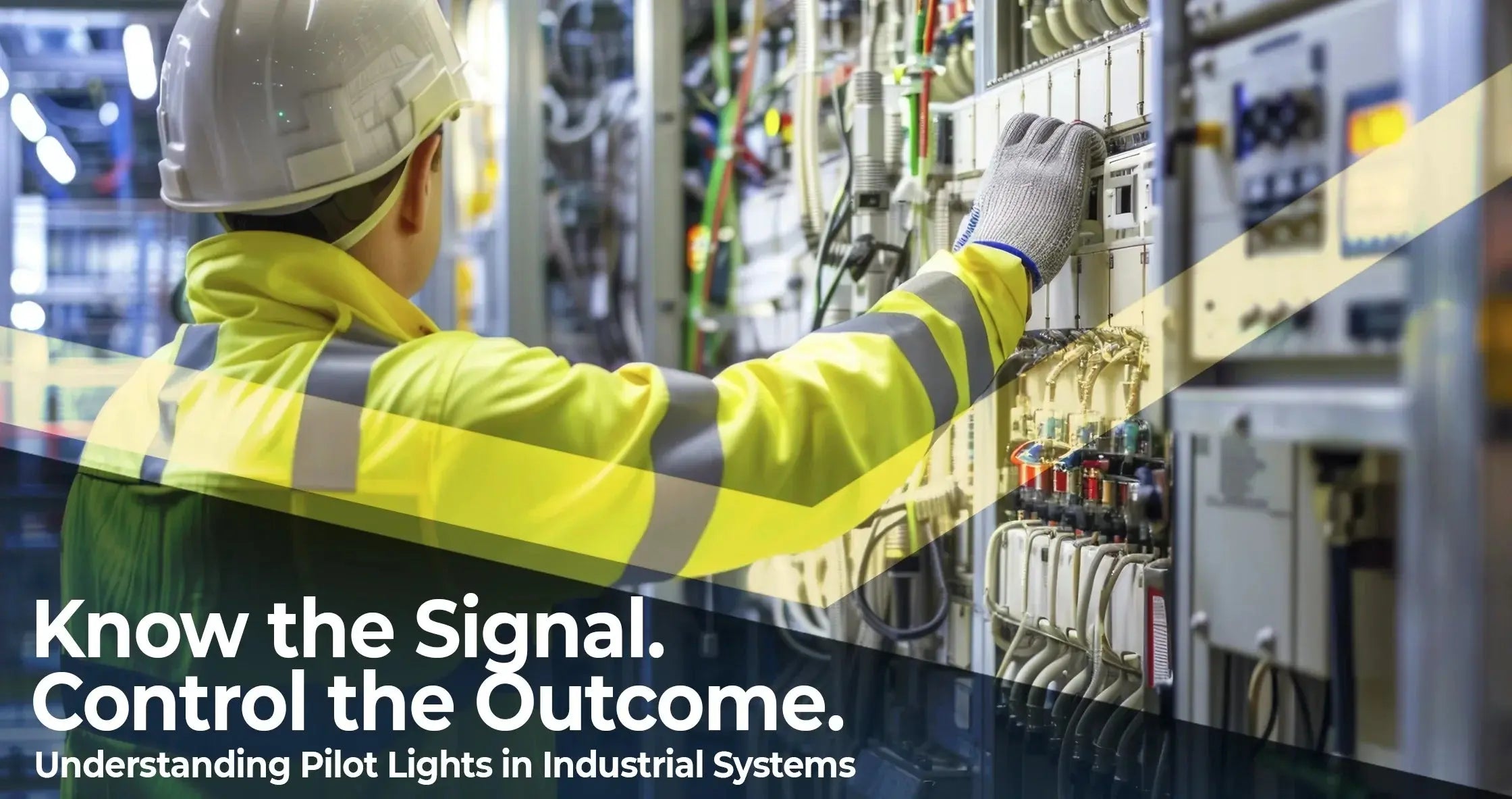En entornos industriales, el uso de luces piloto es esencial para proporcionar información visual sobre el estado de los equipos y sistemas. Sirven como indicadores para informar a los operadores si la maquinaria funciona correctamente o requiere atención. Comprender los tipos de luces piloto disponibles puede ayudar a las industrias a seleccionar la adecuada para sus necesidades específicas. Este artículo explora los diversos tipos de luces piloto comúnmente utilizados en las industrias, sus aplicaciones y beneficios.
Tipos de luces piloto
Existen varios tipos de luces piloto, cada una diseñada para satisfacer diferentes requisitos en aplicaciones industriales. Las más populares son las luces piloto LED, incandescentes y de neón.
Luces piloto LED
Las luces piloto LED se están convirtiendo rápidamente en la opción preferida de muchas industrias gracias a su eficiencia energética y larga vida útil. Ofrecen una amplia gama de colores y opciones de brillo, lo que permite a los operadores identificar fácilmente el estado del equipo. Consumen considerablemente menos energía, lo que las hace ideales para instalaciones que buscan reducir costos de energía.
Luces piloto incandescentes
Las luces piloto incandescentes se han utilizado durante décadas y proporcionan una iluminación brillante. Su diseño simple facilita su instalación y reemplazo. Sin embargo, suelen tener una vida útil más corta y consumen más energía que los LED, lo que genera mayores costos a largo plazo, especialmente en aplicaciones que requieren un uso constante.
Luces piloto de neón
Utilizadas principalmente en aplicaciones de alto voltaje, las luces piloto de neón son fiables y energéticamente eficientes. Producen una luz constante visible en diversas condiciones de iluminación, lo que las hace ideales para paneles de control y otros equipos que requieren una indicación constante de su estado. Sin embargo, suelen ser menos comunes que las opciones LED debido a sus requisitos específicos de aplicación e instalación.
Aplicaciones de las luces piloto
Las aplicaciones de las luces piloto en diversas industrias demuestran su versatilidad e importancia. A continuación, se presentan algunas aplicaciones comunes:
Paneles de control industriales
- Indicar el estado operativo de máquinas y circuitos eléctricos.
- Ayudar a los operadores a identificar fallas y estados operativos normales.
- Comúnmente integrado en líneas de montaje y equipos de fabricación.
Centros de control de motores
- Proporcionar retroalimentación del estado de los circuitos de control y arranque del motor.
- Ayudar a detectar problemas de suministro de energía, sobrecargas o fallas.
Cajas eléctricas
- Se utiliza para indicar la disponibilidad de energía y el estado del sistema en los gabinetes.
- Ayude a mejorar la seguridad en entornos peligrosos con notificaciones visuales.
Ventajas de usar luces piloto
La implementación de luces piloto de alta calidad dentro de los sistemas industriales ofrece numerosas ventajas y mejora la eficiencia operativa general.
Mayor seguridad y concienciación
Las luces piloto proporcionan información visual en tiempo real, lo que ayuda a los operadores a identificar rápidamente posibles problemas. Esta función minimiza el riesgo de fallos del equipo, fomentando un entorno de trabajo más seguro.
Eficiencia energética
Las luces piloto LED destacan especialmente por su eficiencia energética, reduciendo drásticamente el consumo de energía. Este aspecto es crucial para las empresas que buscan reducir sus gastos energéticos y apoyar iniciativas de sostenibilidad.
Versatilidad y personalización
Las luces piloto están disponibles en varios colores, tamaños y opciones de montaje, lo que permite su personalización según aplicaciones específicas y estándares de la industria. Esta versatilidad garantiza que los operadores reciban una comunicación clara sobre el estado del equipo.
Cómo elegir la luz piloto adecuada
Seleccionar la luz piloto correcta para una aplicación implica comprender los requisitos y las condiciones ambientales. Los factores críticos a considerar incluyen:
- Clasificación de voltaje : elija una luz piloto compatible con el voltaje operativo de su sistema.
- Codificación de colores : elija colores apropiados según los estándares de la industria y de seguridad (por ejemplo, rojo para alarmas, verde para estado operativo).
- Consideraciones ambientales : seleccione luces piloto con clasificación IP para instalación en entornos hostiles o húmedos para garantizar durabilidad y rendimiento.
Conclusión
En conclusión, las luces piloto son esenciales para el buen funcionamiento de las operaciones industriales, mejorando la seguridad y la claridad para los operadores. A medida que las industrias evolucionan, el uso de luces piloto eficientes y fiables será cada vez más importante. Al comprender los distintos tipos disponibles, las empresas pueden tomar decisiones informadas que conduzcan a una mayor productividad y al cumplimiento de las normas de seguridad. Para explorar opciones duraderas para sus instalaciones, considere incorporar productos como la luz piloto Sprecher + Schuh de metal de 22,5 mm, 24 V CA/CC, azul. , Sprecher + Schuh Luz Piloto Completa Plástico LED 240V AC Azul , y Sprecher + Schuh Luz Piloto Serie D7P IP66 240V AC Verde para sus necesidades.

Preguntas frecuentes (FAQ)
¿Para qué se utilizan las luces piloto?
Las luces piloto se utilizan para proporcionar indicadores visuales del estado del equipo, alertando a los operadores sobre operaciones, fallas o alertas dentro de la maquinaria.
¿Cómo elegir la luz piloto adecuada?
Tenga en cuenta factores como la clasificación de voltaje, la codificación de colores, las condiciones ambientales y el tipo de aplicación específica para seleccionar la luz piloto adecuada.
¿Vale la pena invertir en luces piloto LED?
Sí, las luces piloto LED son energéticamente eficientes, duraderas y versátiles, lo que las convierte en una inversión que vale la pena por sus ahorros y eficacia operativa.


